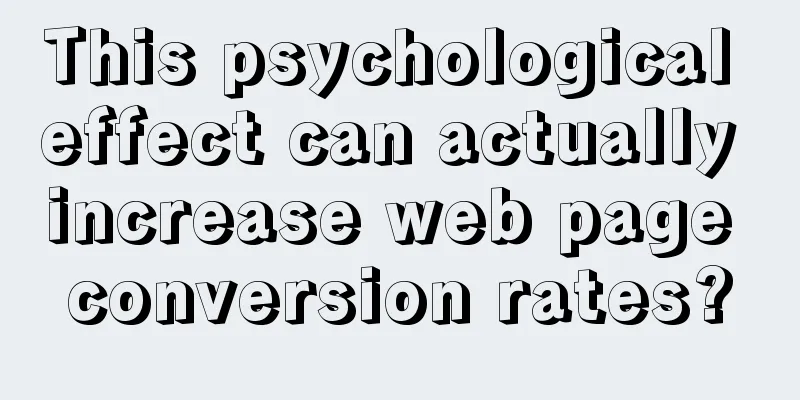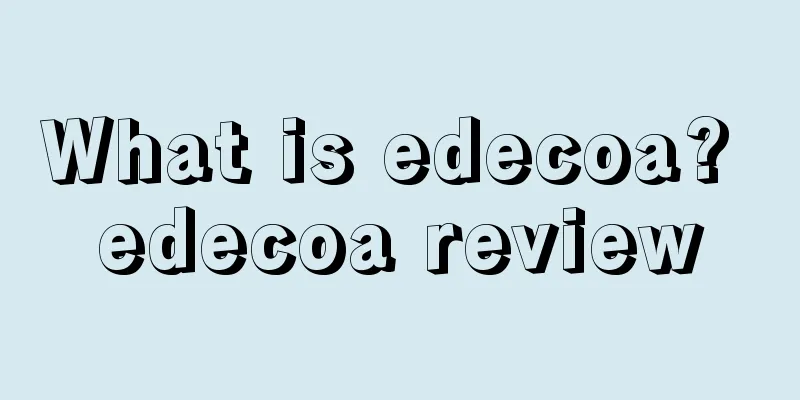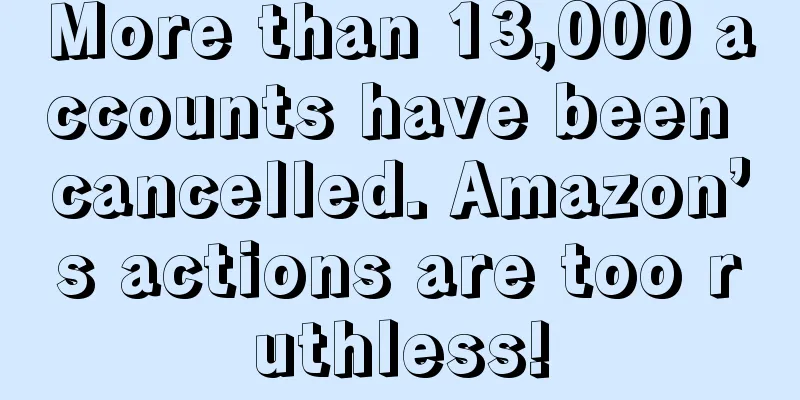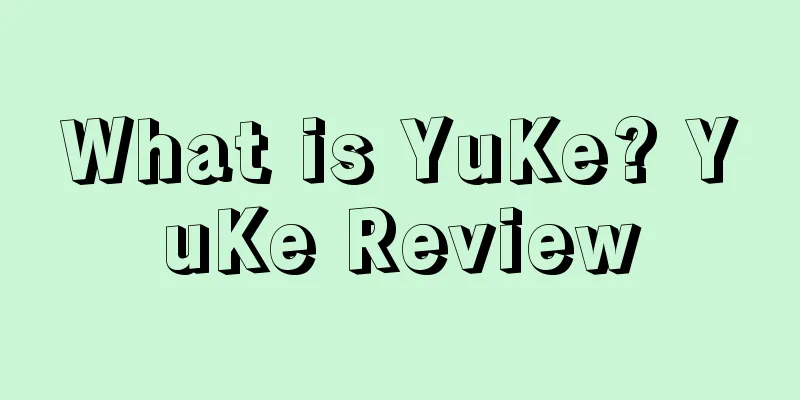This psychological effect can actually increase web page conversion rates?

|
Anyone who has raised a puppy may have had this experience: when you plan to take it out for a walk and put a leash on it, it will start to resist desperately, and even after it is put on, it will not be pulled away. But as time goes by, it gradually gets used to the leash and no longer resists. It will even follow you as soon as you take out the leash. Similarly, have you ever wondered why you always liked to run around naked in your childhood, but now you put on clothes and shoes, and feel that they are so familiar as if they are part of your body. Have you ever wondered why this phenomenon occurs?
In fact, these phenomena are called neural adaptation in psychology. After continuous exposure to a stimulus, the response to the stimulus will gradually weaken. For example, when we put our hands into 50-degree hot water, we will feel slight pain, but after 2 minutes in the water, we will not feel pain. Although the water temperature has not changed much, we no longer feel pain. We are often exposed to stimuli, whether it is tactile, auditory, olfactory, or visual stimulation. We have become accustomed to associating these stimuli with the outside world and thus ignore this phenomenon. For marketers, if you can flexibly use this psychological phenomenon, your advertising will stand out from the crowd unknowingly and achieve unexpected results. There has been a long-standing debate in the industry about which CTA button color works best in advertising copy. Recently, marketing tool company HubSpot conducted a landmark study that compared the effectiveness of red and green CTA buttons.
The results of the study showed that the red button outperformed the green button by 21%. There are many explanations for this result, but none of them is about the psychological sensory adaptation effect. As you can see from the picture above, the overall color tone of the webpage is green. As a result, people will get used to the existence of green and eventually ignore the green CTA button. The red CTA button will be more eye-catching and more likely to be clicked. But in fact, this is the sensory adaptation effect. If you want to increase the conversion rate of your web pages, learn to use the psychological effect of sensory adaptation, and you will design more effective web pages and get a greater return on your investment. 01 The CTA button color should be more prominent than the web page theme color When deciding on the color of your CTA button, the main thing to worry about is not which color to choose. The main thing to remember is that the color of the button should stand out from the main color of the page. That is, if your main color is red, a green CTA button will probably perform better than a red CTA button. For example, in the image below, Bluehost’s main color is blue, but its CTA button is orange, which makes the orange content stand out more compared to the overall color of the website. If the CTA button was blue, the effect would be greatly reduced.
02 The size of the CTA button should be conspicuous enough The size of the CTA button is also important. In many articles about CTA buttons, we have concluded that the CTA button with the highest conversion rate is the "big orange button". A research report by WideFunnel (a professional agency for conversion optimization, customer research and personalization) mentioned that the conversion rate of the "big orange button" increased by 32.5% and the return on investment (ROI) was as high as 154%. Speaking of button size, what size button is best? According to web design magazine Smashing Magazine, CTA buttons should be 20% larger than the website’s logo. The key point of the sensory adaptation effect is: if you have multiple key elements that you want users to notice, don’t mix them together. After optimizing the size of the CTA button in this way, users will be more likely to notice the CTA button and click on it.
03 Don’t give your audience too many choices The researchers found that conversion rates did not increase when consumers were presented with more choices. Experts conducted a study in which consumers were divided into two groups and entered a high-end grocery store: the first group of consumers were presented with 24 types of jams, and the second group was presented with only 6 types. The results showed that although the table with 24 types of jams attracted 60% of consumers' attention, the second group of consumers had a conversion rate of up to 900%. Other studies have shown that if you have too many form fields on your web page, your conversion rate will usually be low. One study found that reducing form fields can increase conversion rates by up to 160%. Therefore, when optimizing your web pages, pay attention to the number of CTA buttons and form fields. This way, you can highlight the most important options and increase conversion rates. 04 Highlight social proof Internet analytics company comScore conducted an A/B test focused on optimizing customer testimonials, in which the testers used three variations: Original: Vertically aligned client testimonials without brand logo; Variant 1: Vertically aligned testimonial with brand logo Variant 2: Horizontally aligned testimonials without brand logo. Variant 3: Horizontally aligned testimonial with brand logo As shown in the results below, each variant with a brand logo outperforms the variant without a logo. That’s because the variant with a brand logo adds pictures to the text, making the customer testimonial stand out, which also benefits from the sensory adaptation effect.
So, we can conclude that social proof with a brand logo/photo and large, bold fonts will stand out more. 05 Optimize pricing to highlight the packages you actually want to sell Based on the principle of sensory adaptation, you can optimize pricing in two ways: Method 1: Tempting Pricing In a famous decoy pricing experiment conducted by psychologist Dan Ariely at MIT, he tested 100 students and asked them to choose between two options:
68% of the students chose option 1, while only 38% chose option 2. In fact, what Ariely really wanted to sell was a print and electronic version of the magazine, so he adjusted his offer to include a third option, as shown below:
As a result, 84% of the students chose the third option, while only 16% chose the first option. Isn’t this result quite amazing! What caused this change? Ariely introduced a decoy option that disrupted the original situation and highlighted the option he wanted people to pay attention to. In this way, he successfully achieved his intention. This is the famous decoy pricing strategy, which includes: 1) an option that is not cost-effective and cheap; 2) an expensive pricing option; 3) a pricing option that offers more savings if you buy more. Method 2: Exploiting the trade-off effect What is the compromise effect? The compromise effect refers to the irrational tendency of consumers ' decisions , which will change with the change of situation. When an extreme option is added to a set of options, the original option will become a compromise option. Then, even if the compromise option does not have an absolute dominance in the set of options, it will be more attractive and the probability of being selected will increase. —— MBA Think Tank This situation is common in life. When faced with three product pricing options, if the product is too expensive, consumers will feel that it is not suitable; if it is too cheap, consumers will worry about the quality. It is safer to choose the product in the middle price! This is the "compromise effect", so when consumers are faced with three choices, they will most likely choose the one in the middle. Take a look at the pricing of a product service company in the figure below:
Do you know why the Enterprise version is placed in the center? It is a compromise between the Premium version and the Enterprise + version. In fact, the Enterprise version is the version that the company really wants to sell. Not only is it located in the center, but its features and pricing are a compromise between the cheapest and most expensive options. In addition, the added blue floating frame and the words "Most Popular" focus customers' attention on the Enterprise version, making it more prominent than other options. In short, the principle of sensory adaptation effect is that prominent things are easy to notice, and mixed things are easy to be ignored. When optimizing web pages, we should realize that mixing primary and secondary elements can easily overshadow the main elements, so we should distinguish important elements from other elements. I hope the 5 strategies in this article can help you. Text ✎ Isla/ Statement: When reprinting this article, the title and original text must not be modified, and the source and original link must be retained. |
<<: The most complete guide to opening a Shopify store, you will know everything after reading it
>>: The sales volume exploded in 7 months. This hot seller has something to tell you.
Recommend
Amazon Legend: Weird Product Complaints
As one of the most powerful e-commerce platforms o...
Pinterest turned a profit in the third quarter! Revenue increased 43% year-on-year to $633 million!
<span data-shimo-docs="[[20,"Pinterest第三季度...
Amazon FBA new regulations, a large number of sellers received warnings! !
text Amazon has put forward new requirements for ...
In the US, Walmart surpassed Amazon and ranked second in the shopping app market in April
According to a report by , based on the shopping a...
What is GlowRoad? GlowRoad Review
GlowRoad is a well-known social commerce network p...
US online shopping trends: 94% change their shopping decisions due to logistics and delivery methods
Recently, DHL released the "U.S. Online Shopp...
Will the store be closed if the account verification fails? Rumor or fact?
Countdown 15 days Amazon announced: Amazon Prime ...
What is U Select U Product? U Select U Product Review
Uxuan Upin is a professional cross-border e-commer...
Walmart ranks first in global revenue with $611 billion, Amazon lags behind by $100 billion!
According to data from Statista's company data...
E-commerce sales in July increased by 10.2% year-on-year! Costco is developing strongly!
<span data-docs-delta="[[20,"获悉,据外媒报道,8月8日...
The US election is reversed again? Trump: I won! Searched 600 million times, these products are popular!
Although Biden has already won the US election, Tr...
Amazon publicly responded! It wants to help sellers share the responsibility
In the middle of this month, we reported that Ama...
What is Clicky? Clicky Review
Clicky is Pakistan’s largest online fashion + shop...









